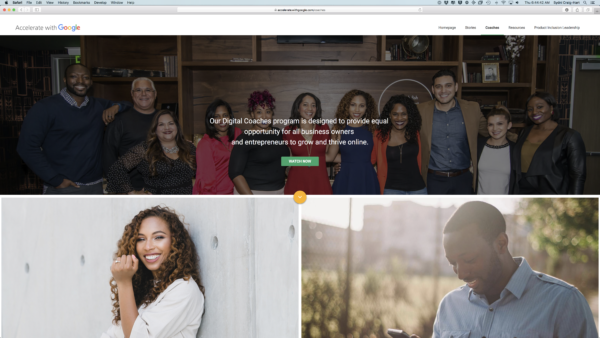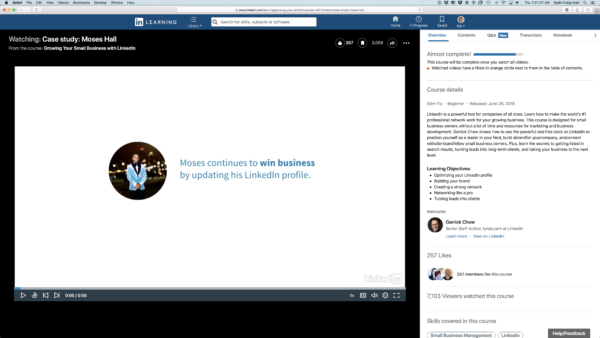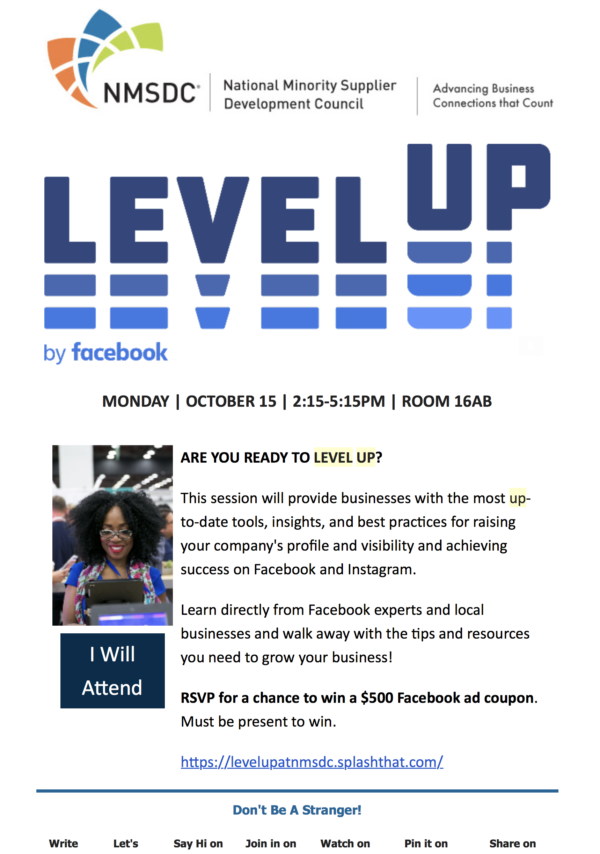 “We’ve missed the mark! We apologize.”
“We’ve missed the mark! We apologize.”
That’s what you don’t want to have to say because your company inadvertently offended a diverse group of your target audience in your new campaign. But, don’t those sentences sound familiar?
How often have you recently heard about a marketing campaign gone wrong?
Dolce & Gabbana, Pepsi, Dove, and Nivea have all been heavily scrutinized for recent missteps with their marketing campaigns.
Then, there was the “See Detroit Like We Do” debacle.
Growing multicultural audiences
Aside from the potential media backlash, if you choose to ignore connecting with diverse audiences, you are losing money and missing opportunities to grow your customer base. Consider this:
- Women’s buying power and influence drives 70 to 80% of consumer purchases. (Source: Forbes)
- African Americans are 14% of the U.S. population and spend $1.2 trillion annually. Further, consumers of color show outsized influence in several key consumer categories and increasingly demand businesses do and be better. (Source: Nielsen)
- Minority consumer markets have grown faster than the buying power of whites since 2000, with the biggest increase from Asian Americans ($986 billion in 2017). (Source: University of Georgia)
Minority consumer markets are growing faster than white consumer market, says @universityofga #research.
Click To Tweet
When a multicultural campaign is executed correctly, it can result in great success and unite people. The real question is not whether to do it, but how do you design a winning multicultural marketing campaign?
The better you get to know your target audience as individuals and really understand what they think about, what they need, and how they tick, the better you can serve them. As a result, your campaigns will have an empathetic, authentic tone that draws your audience organically to your brand.
Here are a few powerful strategies to make sure your work is resonating with customers across populations and groups.
Remember real people are behind demographics
Even when targeting an audience, such as small-business owners or B2B professionals, it’s imperative to remember that the group is made of people – people with different backgrounds, experiences, and levels of familiarity, and who come with their own stories.
How do you create content that truly connects with and builds a community with a diverse audience, especially in a niche market?
You do this by exploring what makes everyone human, the core desires and needs everybody has. Your audience wants to be heard. Your audience wants to be understood. Big or small, they want to be supported.

For example, we typically work with enterprise companies marketing to small-business owners, particularly minorities and women. Yet most of these marketers have never owned a small business, which comes with its own set of challenges that an enterprise company employee hasn’t faced.
When brainstorming about the best ways to connect with their target audience, we start with what individuals in that group have in common, and then explore the nuances that give them different perspectives.
Multicultural brainstorming: Start w/ what your audience has in common then explore nuances. @SydniCraigHart
Click To Tweet
“The more you engage with customers, the clearer things become and the easier it is to determine what you should be doing.” – John Russell, former managing director, Harley-Davidson
Meet your target audiences where they are
Members of your target audience are not all coming from the same place in how they think about your product or service. Getting inside the minds of your ideal customers is critical to your success as a marketer.
Talk to your customers regularly. Invite them into your office. Have conversations with a variety of people in your target audience and learn how your products and services fit into their lives. Pay close attention to:
- What prompts them to go looking for what you sell
- What problems they want to solve
- How they think about your type of business
Discover their language and use it to connect in a relatable way. Think past the product or service you sell and focus on the impact you want to have on them. That’s when you can become an advocate for your audience and a trusted resource to whom they will remain loyal.
Understand that the decision-maker role in one culture may not be the decision-maker in another. Also, different demographics have different viewpoints that influence how they make buying decisions. Men and women make buying decisions differently. People of color and non-minorities view the world differently. Novice users and people with more experience have different levels of comfort and familiarity.
The decision-maker role in one culture may not be the decision-maker in another, says @SydniCraigHart.
Click To Tweet
Take your market research to the next level by focusing on the why behind your target customers’ desires. Gather data that gives insight into their feelings and wants. Answer these targeted questions:
- What are the audience members’ fears?
- What holds them back?
- What challenges are they struggling with?
- What keeps them up at night?
- What is their biggest motivator (i.e., their why)?
- What emotional triggers motivate them to look for the product or service you sell?
The better you understand the individuals you want to serve, the easier it will be to speak to what they have in common and address the variances.
As Adele Revella, author of Buyer Personas: How to Gain Insight Into Your Customer’s Expectations, says, “The climate of social and technological change favors companies that embrace a culture of buyer understanding that allows them to adapt to customer needs.”
Listening to your target audience is easier than ever before. You can:
- Publish a simple poll via social media.
- Include a brief survey when a prospect shows interest in your product or service.
- Visit online forums and review sites to learn what your customers’ pain points are and how other products and services have failed them.
- Start a focus group.
- Invite your customers in for an appreciation lunch and in-person interviews.
- Host experiential events where your target audience can experience your product or service and give feedback in real time.
- Collect post-purchase feedback at intervals such as 30, 60, or 90 days.
HANDPICKED RELATED CONTENT:
Get outside help from those in the know
Enlist the input of individuals on your team who are members of your target audience or have detailed knowledge and experience in working with that market. Test your content with them to see how it resonates. Their authentic insight will provide a fresh perspective.
Imagine the embarrassing and expensive brand damage companies would avoid if they had a diverse group of people from their target demographic review their major campaigns – and listened to the feedback – before they went live.
If your current team does not include a diverse group of people who have walked in your customers’ shoes, bring in outside help.
Collaborating with the right partner allows you to infuse priceless empathy into your campaigns and ensure that your brand is positioned as relatable and transparent. Investing in such a partnership saves time and hardship and spares you one of those we-missed-the-mark apologies.
Look at companies getting it right
While the media enjoys focusing on multicultural marketing gone wrong, a number of companies have executed successful and inclusive campaigns that create value for their target audiences.
Grow with Google launched in October 2017. The program is focused on serving small-business owners, job seekers, educators, and teachers in underrepresented communities seeking access to digital skills training and education.
Aisha Taylor, community engagement manager, is heading up the program after working on Google’s business inclusion team (disclosure: one of our clients), which leads the Accelerate With Google program that serves women- and minority-owned small businesses.

She explains why diversity is important to Google: “If we weren’t going to keep pace with reaching diverse business owners and really winning their trust, then we would start to see a decline in our bottom line because the customer segments that were using our tools is starting to shift.”
From an overall branding perspective, like most technology companies, we don’t necessarily always have the best reputation in terms of our diversity and inclusion, especially when we think about externally how we’re really reaching diverse audiences. We want to be able to do so in more authentic ways.”
Aisha shares how Google’s business inclusion team did both qualitative and quantitative research and connected with diverse small businesses around the country. It discovered a distinct gap in the audience’s feelings of accessibility to tools other small-business owners found successful.
“We want to be able to equip small-business owners and actually see them grow and thrive in the same ways that we were seeing some of their counterparts,” Aisha says.
Julia Cabral is a senior product marketing manager at LinkedIn (disclosure: a client). Diversity is core to her work as she advocates for all LinkedIn members, including the non-paying platform users.
LinkedIn has over 562 million members in 200 countries. “If we don’t represent that diversity and give insights to our product team about all the different ways in which our member base is diverse and ‘here is the way in which that translates into different product needs,’ then our product teams will build something for people who look like them,” Julia says.

“Our job as consumer product marketing,” she explains, “is really to be the advocate of our entire member base. That member base is incredibly diverse, which we’ve showcased in our free trainings such as the Growing Your Small Business With LinkedIn course. Diversity is core to what I do every day.”
Level Up by Facebook
Facebook recently launched the Level Up program, a series of ad-creation workshops developed for businesses and nonprofit organizations with African-American and Latin-American owners.

These workshops provide them with the most up-to-date tools, insights, and best practices for raising their company’s profiles and visibility and achieving success on Facebook and Instagram. Participants have an opportunity to learn directly from Facebook experts and walk away with the tips and resources to grow their businesses.
Minority-owned businesses have enthusiastically expressed appreciation for the content tailored to their needs and delivered by “people who look like me,” as one Level Up workshop participant told me.
Appreciate value of diversity
From my experience, the results show savvy content marketers see multicultural marketing as an intriguing expedition rather than a nagging problem. As such, how you personally view diversity can make all the difference in how well you develop effective campaigns. Your perspective can cause frustration and misunderstandings or be a catalyst for growth and opportunity.
How you view diversity can make all the difference in how well you develop effective campaigns. @SydniCraigHart
Click To Tweet
Rather than avoiding the topic of multicultural diversity, engage with it. Focus on the opportunities for expansion that differences can bring. Embrace the opportunity to serve and empower your diverse audience, keeping it at the core of all you do instead of focusing solely on your team’s marketing goals.
Focus on the opportunities for expansion that multicultural audiences can bring, says @SydniCraigHart.
Click To Tweet
Build a legacy
To stay relevant, companies and brands need to be advocates for their customers and followers. Take a cue from Google, LinkedIn, and Facebook by supporting those in your network even if they are not paying you yet.
Start where you are. Invite a fresh set of eyes to review your current campaigns with a view to infusing more authenticity and diversity into your marketing messages. Talk to your customers. Find out what they need and what they want. Take a step back from your KPIs and focus on empowering people to succeed.
Use your customer’s language in your brainstorming sessions, strategy meetings, and road map exercises. Instead of developing content that highlights the features of your products, produce content that educates, inspires, and solves the problems with which your target audience struggles.
No matter what product or service you are marketing, your audience is not one-size-fits-all. Effective multicultural marketing is the new normal – for all content marketers. It enables you to achieve goals to drive engagement, deepen loyalty, and gain market share. It enables your prospective and existing customers who are looking for education, guidance, and support, to gain a mentor, a partner.
Here’s an excerpt from my talk:
Author Sydni Craig-Hart covered multicultural marketing in her Content Marketing World presentation, Profitable Multi-Cultural Marketing – Increase Sales Using Diversified Resources to Infuse Authenticity Into Your Campaigns. To watch it and hundreds of other presentations from experts, subscribe to CMWorld video on demand today.
Cover image by Joseph Kalinowski/Content Marketing Institute
The post Multicultural Marketing: Why You Need to Get Started appeared first on Content Marketing Institute.
No comments:
Post a Comment